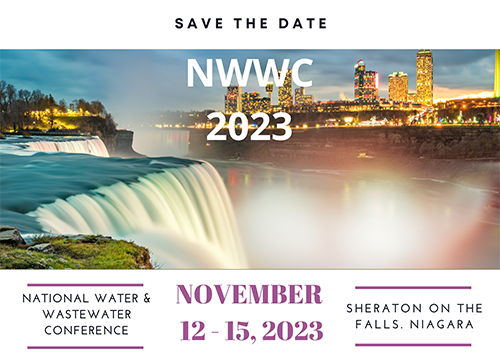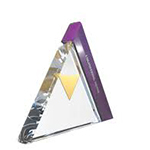 |
||||||||
| Subscribe | Past Issues | www.cwwa.ca | Water Source Magazine | ||||||||
|
CWWA News
As YOUR national association, the CWWA is a volunteer-driven organization. While we do have 4 full-time staff (Robert, Kara, Adrian and Louisa), our direction and support comes from you the members. You write the articles, attend the conferences and make the presentations. More importantly, you form the committees, review federal policies, formulate official comments, prepare position statements and guidance documents and create the conference program. Federal Initiatives
As of December 20, 2022, it will no longer be legal in Canada to manufacture or import most plastic shopping bags or straws, along with stir sticks, cutlery and takeout containers. One year later, the sale of those items will also be banned. The manufacturing and importing of six-pack plastic rings for drink containers will be banned in June 2023, with their sale ending a year after that. In September, 2022, Environment Canada updated its Substances Search Tool. The tool can be used to look up substance names and substance identifiers that are referenced in various legislative or regulatory instruments or Government of Canada websites. If you click on the substance you can access a list of the legislation pertaining to it – while the full legislative requirements aren’t available, it’s a good starting tool if you are uncertain of federal requirements for a substance. A new CSA Group Municipal How-to Guide outlines three easy steps to integrating CSA Standards into planning and approval processes. Water Canada Imagine receiving an emergency alert on your phone stating your drinking water has been contaminated. If you drink it you may suffer adverse effects to reproduction and development, endocrine/hormone disruption, different cancers, or general toxicity. A scroll through your social media feed reveals just how severe this contamination is. Your local drinking water treatment facility lacks the advanced technology to remove these contaminants and only the richest neighborhoods with access to advanced water treatment are receiving potable water. You learn these advanced drinking water technologies have not been commercialized for public use due to their high costs, novelty, and difficulty in obtaining the required assembly parts. You wonder how your government and water quality regulators let this happen. The news claims that even the bottled water sitting in your fridge is contaminated, but you have no choice – you have to drink it. This might sound like the beginning of a disaster movie, but it could be a dystopian reality for us all if we don’t act. We’re excited to announce that we’re again collaborating with Water Canada to host the 2023 Window on Ottawa as part of the 14th annual Canadian Water Summit. Mark your calendars for June 7 – June 9, 2023. Be sure to join us at the Delta Hotel in Ottawa! The CWS facilitates cooperation, collaboration, and knowledge-sharing among the many diverse groups that make up our Canadian water landscape as we advance our mission to build Canada’s ‘Blue Economy’. The Window on Ottawa portion will focus on federal and national water initiatives and give our members access to senior policy development teams at the federal government. We cover a range of topics related to drinking water, wastewater, and stormwater at each of our events. During each of our sessions, we have discussions about policies, projects, and innovations in the Canadian water industry and beyond. Member News
Provincial News
The proposed regulation would focus permitting decisions relating to the control of flooding and other natural hazards. On November 23, 2022, the Province posted its 2022 Climate Change Accountability Report. The accountability report details progress made across sectors - in particular: transportation, industry, buildings and communities, and the public service. Snippings & Clippings
Water Canada There’s a steady stream of news about severe water shortages and “megadrought” around the globe. As the Colorado River dries up in the United States, it’s clear that everyone – from families, to small businesses, to multinational corporations – should be asking the same question: What are we going to do about it TODAY? Tomorrow will be too late for all of us to become water stewards. Even water-rich Canada must deal with climate-change impacts on water security and quality, especially for its indigenous communities. Municipal World People can be accused of making things too simplistic. Sometimes people say “there is more to it than that” or “you just don’t know everything going on here.” While all this is true, one could also respond back with a question: “Are we unintentionally making things more difficult than they need to be?” Daily Commercial News The issue of non-flushables, such as wet wipes, plaguing wastewater authorities across Canada has added a new concern as Canada’s opioid crisis is resulting in more spent needles in sewer clogs. Water Canada Per- and polyfluoroalkyl substances, or PFAS, are a huge group of manmade chemicals that have been used in industry and in consumer products since the 1940s. Thanks to their incredibly strong carbon-fluorine bond, PFAS degrade quite slowly and resist heat, grease, and water making them seemingly perfect for cookware and popcorn bags, firefighting foam and textiles, and everything in between. Sounds too good to be true? ES&E Magazine As climate change continues to increase the frequency of wildfire, flooding and devastating storms, the federal government is trying to face up to the challenge with adaptation objectives and targets that deliver some 70 actions against climate risk. E&E News: Greenwire The nation’s largest water lobbies are calling on the Biden administration to grant project developers a two-year reprieve from “Buy America” requirements — warning that failing to do so will put a chokehold on federal infrastructure dollars. Advocates say the administration has so far remained mum. The Advocate A first-of-its-kind interactive map shows the sheer scale of the 2016 floods that devastated the Baton Rouge region. The online tool, created after years of work by the Amite River Basin Commission, shows how the floods swamped land stretching across more than 67 miles, from as far north as the Mississippi state line to as far south as the swampy fringes of northern Convent, along La. 3125. |
||||||||



